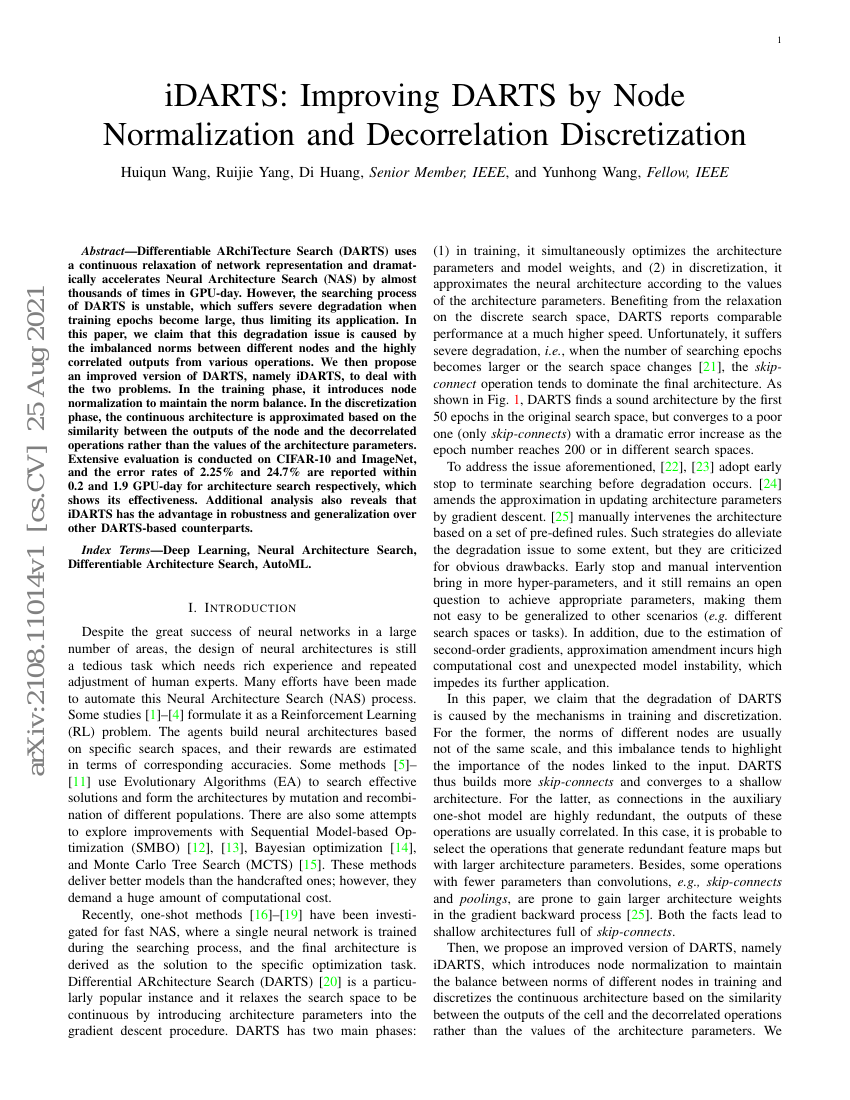Command Palette
Search for a command to run...
iDARTS: Improving DARTS by Node Normalization and Decorrelation Discretization
Huiqun Wang Ruijie Yang Di Huang Yunhong Wang

Abstract
Differentiable ARchiTecture Search (DARTS) uses a continuous relaxation of network representation and dramatically accelerates Neural Architecture Search (NAS) by almost thousands of times in GPU-day. However, the searching process of DARTS is unstable, which suffers severe degradation when training epochs become large, thus limiting its application. In this paper, we claim that this degradation issue is caused by the imbalanced norms between different nodes and the highly correlated outputs from various operations. We then propose an improved version of DARTS, namely iDARTS, to deal with the two problems. In the training phase, it introduces node normalization to maintain the norm balance. In the discretization phase, the continuous architecture is approximated based on the similarity between the outputs of the node and the decorrelated operations rather than the values of the architecture parameters. Extensive evaluation is conducted on CIFAR-10 and ImageNet, and the error rates of 2.25\% and 24.7\% are reported within 0.2 and 1.9 GPU-day for architecture search respectively, which shows its effectiveness. Additional analysis also reveals that iDARTS has the advantage in robustness and generalization over other DARTS-based counterparts.
Benchmarks
| Benchmark | Methodology | Metrics |
|---|---|---|
| neural-architecture-search-on-cifar-10 | iDARTS +ME | Parameters: 3.6M Search Time (GPU days): 0.4 Top-1 Error Rate: 2.25% |
| neural-architecture-search-on-imagenet | iDARTS (ImageNet) | MACs: 568M Params: 5.1M Top-1 Error Rate: 24.7 |
| neural-architecture-search-on-imagenet | iDARTS (CIFAR-10) | MACs: 578M Params: 5.1M Top-1 Error Rate: 25.2 |
Build AI with AI
From idea to launch — accelerate your AI development with free AI co-coding, out-of-the-box environment and best price of GPUs.